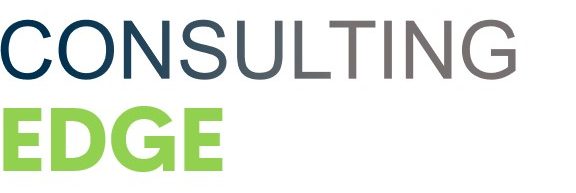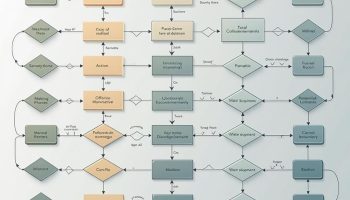As a project manager, you will be required to share your progress with the team. One way of doing this is to create a project summary report that includes everything about the project.
The summary report is a document that summarizes the findings of a project and helps to communicate them. Different stakeholders can use it in the project for various reasons, such as decision-making and closure.
This blog post will cover creating a summary report with some tips and benefits of a summary report.
What is a Project Summary Report?
Project Summary Report is a brief, high-level overview of a project report. It provides the executive summary of the whole project.
A Project report includes information on the project’s purpose, highlights major activities & accomplishments, and lists future expectations.
Creating a Project Summary Report enables you to keep track of crucial milestones completed in your projects. It also allows you to store all relevant data for future reference in one place. Eventually, this saves time when creating another Project Report in the future.
How to create Project Summary:
Project summary reports are an essential tool for communicating project status to stakeholders. They can be used in various ways, including; providing progress updates, highlighting achievements, and many more.
For an influential report, it is essential to include the following sections:
- Scope of the Project
- Challenges encountered
- Solutions to these challenges
It is also crucial that you use specific numbers, so readers know how much has been accomplished.
Let’s dive straight into creating a report;
Briefly Summarize the Project Goals:
The first starts with defining the project goal. Next, explain what you are trying to achieve with the project. This is usually done in one word but can be expanded upon if needed.
Explain what was included or excluded from this project. You can consist of other organizations or outside factors that were either included or not included in the project.
For Example: “This project will only address the manufacturing aspect of our business. We will not consider any other aspects, including but not limited to, marketing or shipping.”
List the activities that you performed to reach your goal. Also, include any outputs or outcomes of these activities.
Briefly Summarize the Project Objectives:
Next, you will want to define your objectives – what exactly do you plan on doing? Then, we can determine which tasks we must complete and figure out our needs and resources from these objectives.
The first step is to create a task list for the project. This list should include all of the tasks you will need to complete to reach your goal. If any sub-tasks must be completed before specific tasks can begin, please include those as well.
For Example: “We would like to increase our productivity by 10% within 3 months of the project’s start.”
List what you plan on doing and how long each task will take. Then, justify why this time frame would work best for completing these activities. These ‘justifications’ might not be necessary if it seems clear why specific numbers were used; however, they may be helpful for clarification or understanding.
List out all the Risks or Problems:
After completing our tasks and objectives, we will need to define the upcoming risks and problems. These should be things that could go wrong or prevent us from reaching the goal of this project.
This will allow you to resolve any issues before they become problems. You will have to list out all of the risks or problems that could be detrimental to this project.
For Example: “We may not reach our productivity goal due to the lack of resources, or due to the lack of experience with this new equipment.”
List what might go wrong and how these risks can be mitigated or removed. If there is no way to remove the chance, make sure this is stated as well.
Find out Solutions to all Problems:
Now that you’ve defined your problems, it’s time to find solutions to problems. Sometimes issues will arise, and we can do nothing to stop them, but we can try to resolve them as quickly as possible.
This will allow you to resolve any issues before they become problems. Before this make sure, you have listed all the risks or problems that could be detrimental to this project.
Link to other Project Resources:
Finally, you will want to add resources to the other completed tasks of the project. If you have a resource that you’ve done with the job, link here.
This is to show stakeholders about the deep details of the project. For this reason, you will want to have a well-documented report that is easy to read and understand.
For Example: “This report looks over the tasks completed in Project XYZ.” Then list all of the tasks done in Project XYZ(b) with links to other resources about each assignment.
In this way, you’ll be able to showcase your project to stakeholders by showing them the tasks completed, goals reached, risks encountered, and so forth.
Wrap up with steps need to start now:
Here, you’ve wrapped up with the vital step you need to take right now. You should also add a call to action to know what they need to start doing right away.
Once you’ve completed this, remember to print it out and distribute it to all of your stakeholders. Of course, your stakeholders will want to know how well the project was completed and the results.
You might also want to include a reference list at the end of this report for all project activities that were done. This should give credit to those who helped you complete each task.
Benefits of creating a Project Summary Report:
There are a lot of benefits of creating a Project Summary Report. First, this report will show the stakeholders of your project what was done and how well it’s working.
The best thing you can do for your report makes it easy to read and understand. If someone cannot understand, you did not do an excellent job on the project summary report.
Here are some of the benefits of the project report;
- It serves as a clear representation of what has been accomplished.
- Allows for status on the project to be easily shared.
- It shows what was completed and when it was done.
- Provides a clear understanding of the steps taken to complete this project.
- Helps with tasks that need to be done in the future.
Creating a Project Summary Report makes it easier for your stakeholders to see where you’ve been and where you’re going.






